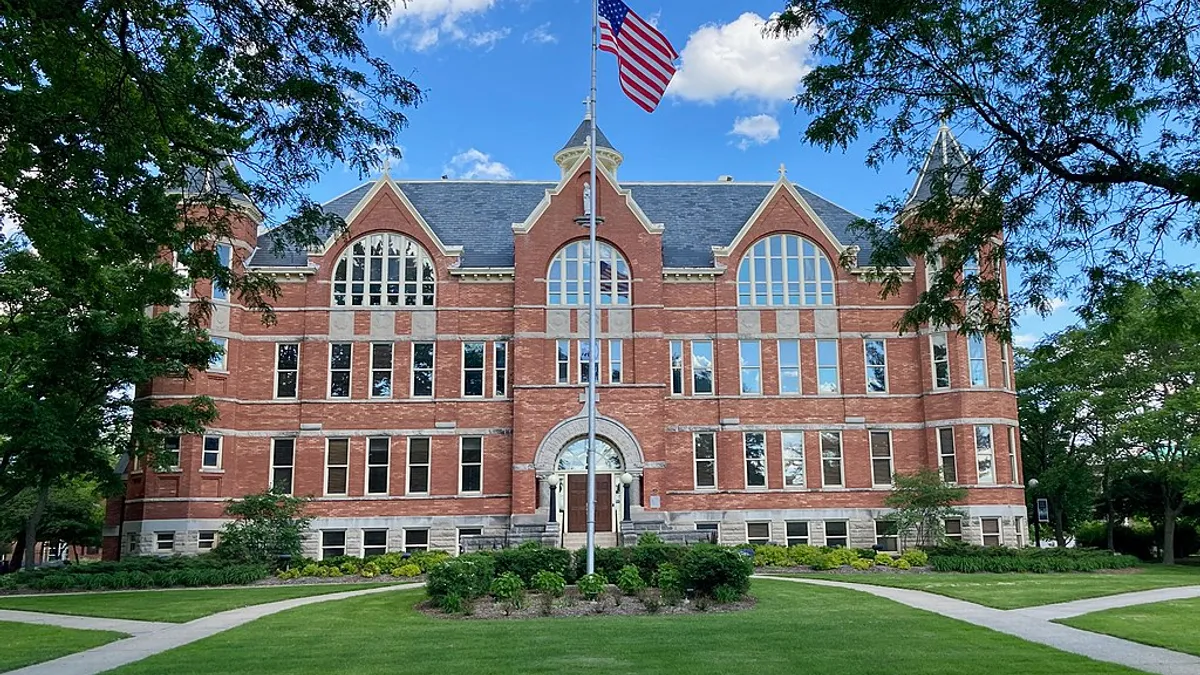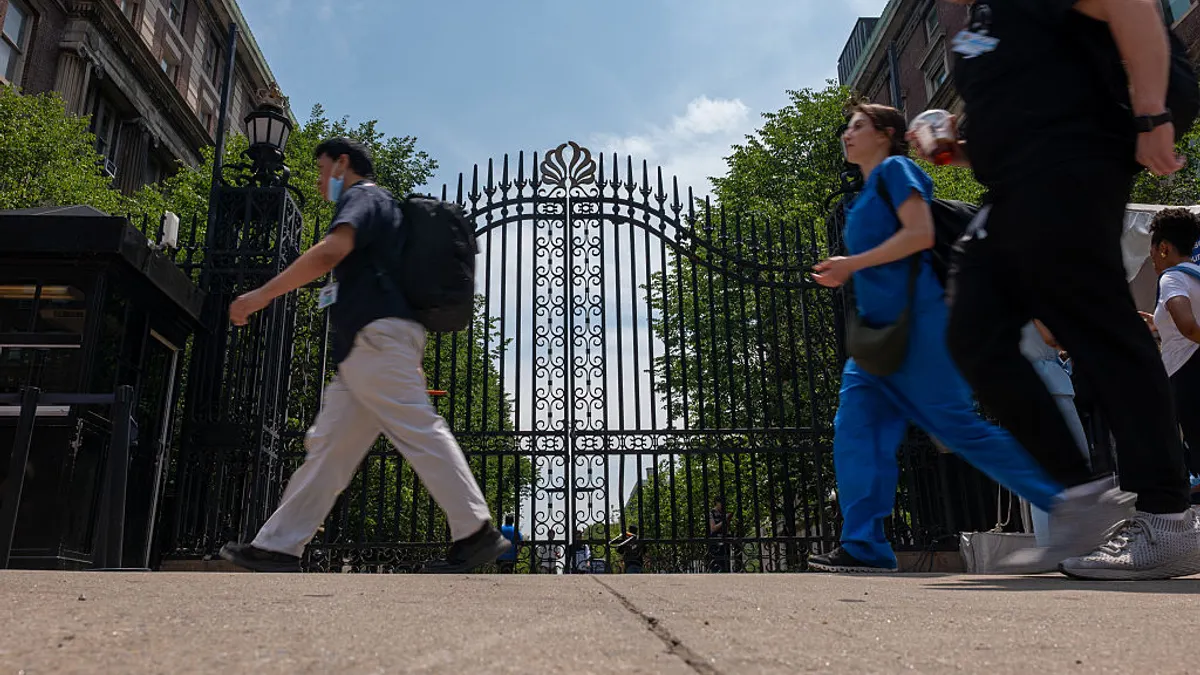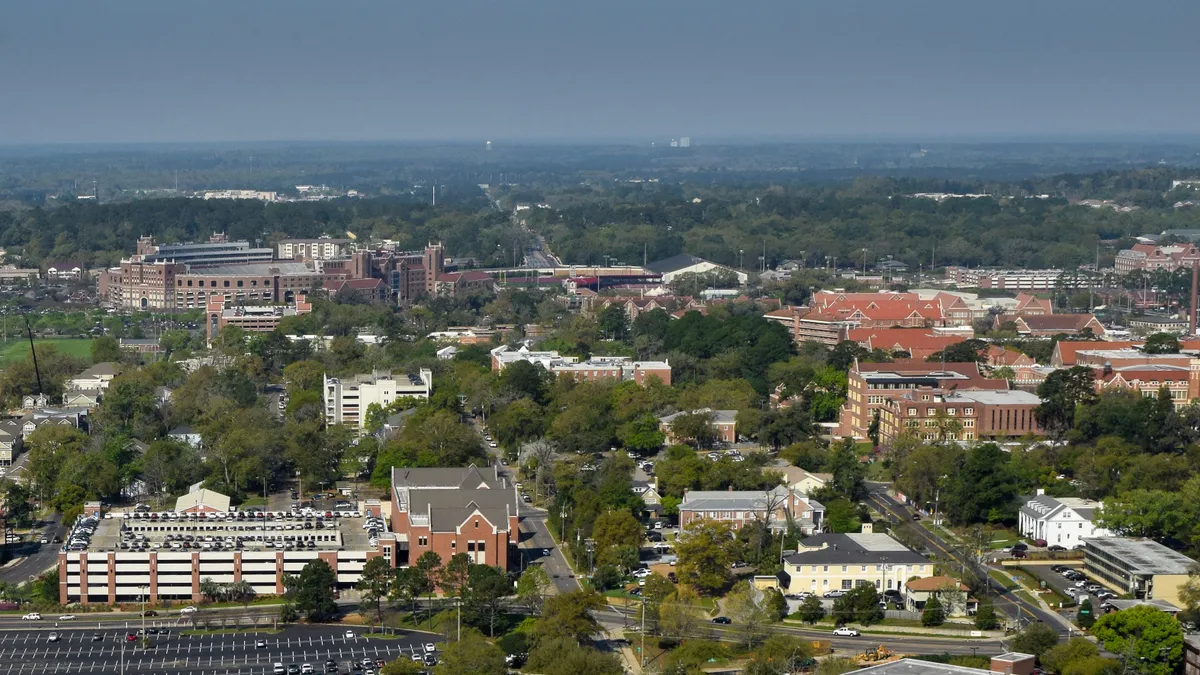A program that provides low-income students at three Ohio community colleges with academic, career and financial support led to higher degree attainment and earnings over eight years, according to a new study from nonprofit research group MDRC.
Cincinnati State Technical and Community College, Cuyahoga Community College and Lorain County Community College launched the program in 2014 to boost student outcomes.
They based the program on the Accelerated Study in Associate Programs model, which was developed in 2007 by City University of New York to boost three-year graduation rates. The model, which provides up to three years of intensive financial and academic support services, has shown promise as a way to address common barriers that prevent students from finishing their diplomas.
Since the program’s launch at the three Ohio colleges, 46% of participating students earned a degree, compared to just 31% of students who had not received the same services and support, MDRC found.
Participating students also earned $3,337 more than the control group’s average of $24,596 by the eight-year mark, the report said. The model’s comprehensive support, as well as the labor market benefits of having a degree, may have helped those students land higher-paying jobs, according to the report.
“In a time of increasing public skepticism about the value of a college degree, these findings affirm the role of community colleges as a driver of economic mobility — and comprehensive student support programs like ASAP are an evidence-backed way to achieve that goal,” the report said.”
What does the ASAP model look like?
MDRC’s study compared 806 students who were enrolled in the Ohio program against 695 who were not from the spring 2015, fall 2015, and spring 2016 cohorts. Eligible students were: newly enrolled at one of the colleges or had earned 24 or fewer credits; eligible for federal Pell grants; seeking a degree; and willing to enroll full time in a three-year program. They were selected through a lottery-like process.
About half of the students were considered nontraditional, meaning they were 24 years or older, worked at least 35 hours a week, were parents or had received a GED instead of a high school diploma.
First-generation students, parents, and those who work face several barriers that impact their ability to be successful in college, said Colleen Sommo, an MDRC senior fellow who leads the nonprofit’s research into the Ohio ASAP program.
That includes juggling work and family responsibilities with their studies, navigating an unfamiliar environment and affording the full cost of attendance, including text books, food, housing and transportation. The program offered financial and academic services to help address those challenges.
ASAP students whose tuition was not fully covered by financial aid received waivers through the program to cover the remaining balance, which averaged $369 to $675, said Sommo.
Students also received textbook vouchers, according to Sommo. And they received $50 a month for gas and groceries, she said.
Students were required to meet with advisors at least monthly, for help with academic concerns, institutional policies, personal matters and campus support services, said Sommo. Students had to attend tutoring if they were struggling academically and work on career activities at least once per semester, such as meeting with a career specialist, creating a resume or attending a career fair, she added.
Students indicated in a survey that the financial assistance reduced their financial anxiety and the advisor support was “invaluable,” she said.
“By providing a comprehensive set of services to students, the supports enable students to enroll full time and overcome challenges they encounter along the way,” Sommo said.
A growing movement
The new findings from Ohio add to a growing body of evidence that the ASAP model can help boost student success at colleges nationwide.
The ASAP model was first launched by CUNY. New York City students who participated showed a three-year graduation rate nearly two times higher than those who didn’t, the MDRC report stated.
ASAP initially started as a community college program. But CUNY launched a version of the program that targets four-year students called Accelerate, Complete, Engage in 2015. According to CUNY, students in the first ACE program cohort had a four-year graduation rate that was 16 points higher than the comparison group.
Although the three Ohio colleges were the first to replicate the ASAP program, more than 40 institutions in seven states have launched similar programs. Many of them have shown “similarly strong results for academic outcomes despite operating in substantially different contexts and with varied student populations,” the report said.
Since then, programs have been replicated at both two- and four-year institutions in states and cities including California, West Virginia, Philadelphia, and Nashville, Tennessee. Earlier this year, Colorado also announced it was bringing ASAP to two of its community colleges.
Some colleges are even adapting ASAP models to workforce programs that lead to high-demand jobs, said Sommo. North Carolina Community College System’s program, for instance, targets students who are seeking associate degrees in such fields in the state.
“As more studies confirm the effectiveness of the program and new evidence shows that it increases earnings, additional states and colleges are recognizing that the program is a good investment for their students,” said Sommo.




















